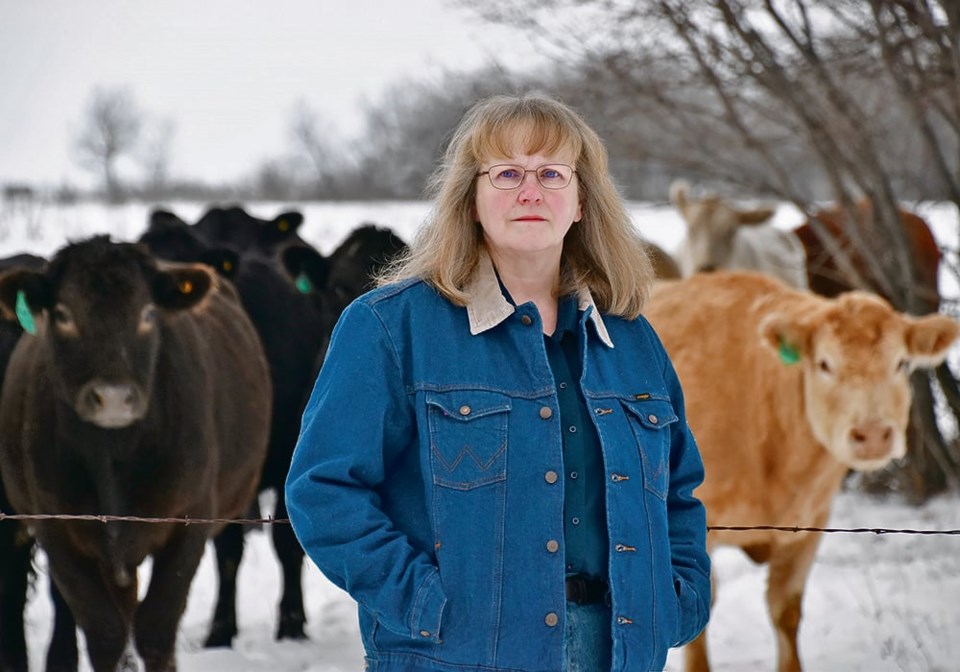WESTERN PRODUCER– If is any indication, few weaned calves ready for the feedlot are carrying medication-resistant passengers.
The project was focused on bacteria and viruses that can contribute to bovine respiratory disease (BRD). It found antimicrobial resistance (AMR) in just two per cent of sampled calves from 27 herds throughout the four western provinces.
Only three calves were found hosting microbes resistant to more than two types of antimicrobials.
The results are consistent with similar research, wrote lead researcher and University of Saskatchewan professor Cheryl Waldner in an email. However, her study had more focus on sampling on the farm of origin, before feedlot entry, than on other projects.
“Bovine respiratory disease (BRD) is one of the most important causes of sickness and death loss in beef cattle, both in cow-calf herds and in feedlots,” she said.
Pneumonia is the most common issue producers will see in their herds, she added, and understanding the bacteria and viruses at the root of the infection can help prevent illness through vaccination, or set up the producer for success if it does occur.
“We can provide better advice for treating calves that get sick near the time of weaning,” she said. “It further helps us design programs to best use the vaccines we have to prevent respiratory disease in the beef industry and to identify gaps where we might need new vaccines.”
Waldner’s research team is also looking at bacteria and viruses present in calves upon arrival at the feedlot and how those organisms change once calves are on feed.
“Again, this information can be used to help beef producers and veterinarians inform respiratory disease management, including vaccination and antibiotic use.”
The project had four main objectives. They included quantifying current cow-calf antibiotic resistance in respiratory pathogens through traditional culture techniques, assessing potential association between antibiotic use in cow-calf herds and antibiotic resistance in BRD pathogens in calves before entering the feedlot, and evaluating emerging tools to potentially improve cost-effective surveillance.
They also hoped to identify any management practices that could make finding specific BRD bacteria or viruses more likely.
“Management factors such as calving earlier, more confinement of animals at calving and handling cow-calf pairs more often can be associated with an increased risk of BRD,” she said.
“These producers would be most likely to benefit from working with their veterinarians to review their vaccination programs for BRD, especially in mother cows and nursing calves.”
Researchers also tried to find management practices that could be linked with antimicrobial resistance development in BRD pathogens found in calves.
“However, the occurrence of AMR was so low that there wasn’t enough data to examine this question,” Waldner said.
They started by collecting nasal swabs from 26 calves at or near weaning in most of the 27 participating herds. These samples were cultured in the lab to identify respiratory pathogens.
Those pathogens were then tested for antimicrobial resistance through standard techniques. The resistance found was then compared to what had been previously reported for cow-calf herds and feedlot cattle in Western Canada.
Metagenomic sequencing was performed on some of the samples. This technique expands the range of bacteria and viruses researchers can test for.
In this case, it was used to describe additional respiratory bacteria of interest, antimicrobial resistance genes in those bacteria, genes associated with bacterial serotype (groups of micro-organisms with similar surface structures) and respiratory viruses.
“The metagenomic sequencing tools we used in this study looked for DNA and RNA from a wide variety of organisms that can potentially cause disease,” Waldner said. “This approach has some advantages over traditional laboratory tests as it allows us to look for many different types of bacteria or viruses with a single test.”
The analysis also helps indicate how likely those organisms are to cause disease, she noted.
The project was funded by the Alberta Beef Producers, Beef Cattle Research Council, the Canadian Beef Cattle Check-Off, the Natural Sciences and Engineering Research Council of Canada and the Saskatchewan Ministry of Agriculture.




